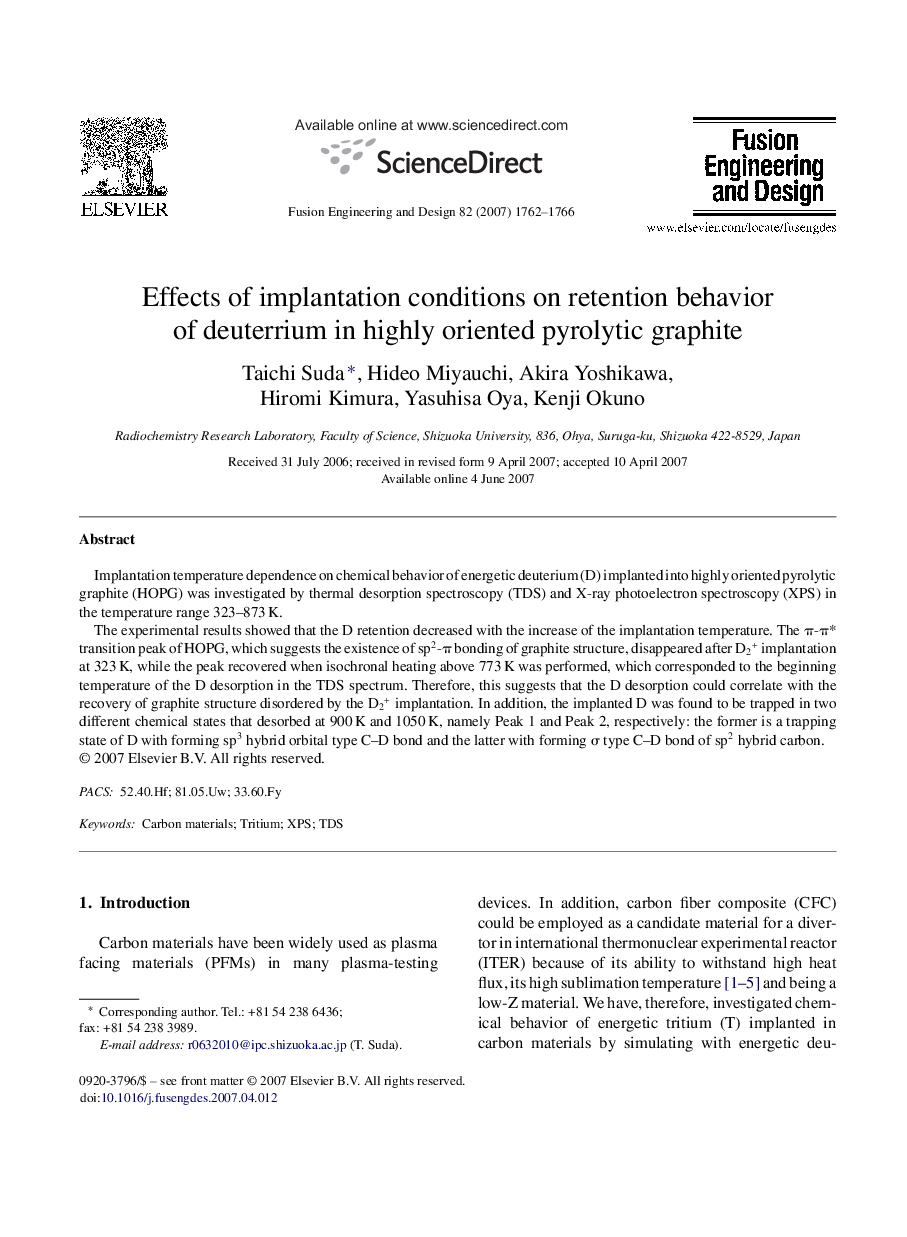| Article ID | Journal | Published Year | Pages | File Type |
|---|---|---|---|---|
| 273561 | Fusion Engineering and Design | 2007 | 5 Pages |
Abstract
The experimental results showed that the D retention decreased with the increase of the implantation temperature. The Ï-Ï* transition peak of HOPG, which suggests the existence of sp2-Ï bonding of graphite structure, disappeared after D2+ implantation at 323Â K, while the peak recovered when isochronal heating above 773Â K was performed, which corresponded to the beginning temperature of the D desorption in the TDS spectrum. Therefore, this suggests that the D desorption could correlate with the recovery of graphite structure disordered by the D2+ implantation. In addition, the implanted D was found to be trapped in two different chemical states that desorbed at 900Â K and 1050Â K, namely Peak 1 and Peak 2, respectively: the former is a trapping state of D with forming sp3 hybrid orbital type C-D bond and the latter with forming Ï type C-D bond of sp2 hybrid carbon.
Related Topics
Physical Sciences and Engineering
Energy
Energy Engineering and Power Technology
Authors
Taichi Suda, Hideo Miyauchi, Akira Yoshikawa, Hiromi Kimura, Yasuhisa Oya, Kenji Okuno,
